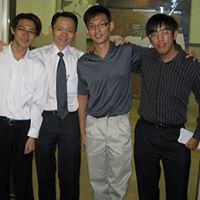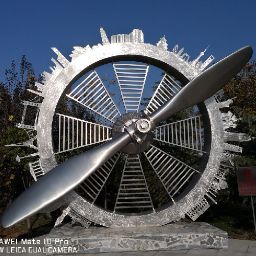Bing L Zhao
age ~67
from North Potomac, MD
- Also known as:
-
- Zhao L Binglin
- Binglin Zhao
- Zhao Bing
- Lin Zhao Bing
- Phone and address:
- 173 Lazy Hollow Dr, Gaithersburg, MD 20878
Bing Zhao Phones & Addresses
- 173 Lazy Hollow Dr, Gaithersburg, MD 20878
- North Potomac, MD
- 53 Marlborough St, Boston, MA 02116 • 6172626989
- Allston, MA
- Malden, MA
- Brookline, MA
Resumes

Bing Zhao
view source
Bing Zhao
view sourceName / Title
Company / Classification
Phones & Addresses
Vice president
OPTIC FRINGE CORP
57 Albert Rd, Auburndale, MA 02466
Auburndale, MA 02466
Auburndale, MA 02466
Us Patents
-
Diffractive Non-Contact Laser Gauge
view source -
US Patent:20050117162, Jun 2, 2005
-
Filed:Sep 30, 2004
-
Appl. No.:10/955562
-
Inventors:Bing Zhao - Newton MA, US
William Budleski - Raleigh NC, US
Will Middelaer - Simsbury CT, US
Kenneth Wendt - Higganum CT, US -
International Classification:G01B009/02
-
US Classification:356496000
-
Abstract:A non-contact gauge and method of use is provided for optical measurement of an object or objects. The apparatus and methods may comprise a laser providing a projected laser beam; a work-piece holder for holding the object to be measured; a light sensitive sensor located to sense the beam as the beam is diffracted by at least one edge of the object and as the beam forms a near field Fresnel diffraction fringe pattern upon elements of the sensor. The laser and the sensor are located to enable near-field Fresnel diffraction. A fringe pattern signal analyzer may be included for computing mathematical algorithms to determine the position (X) of at least one edge of the object based upon the diffraction pattern sensed by the sensor wherein the fringe pattern signal analyzer is structured to refine sensed fringe pattern edge position data to be more accurate based upon a theoretical diffraction compensation factor.
-
High Output Power Digital-To-Analog Converter System
view source -
US Patent:20150171878, Jun 18, 2015
-
Filed:Feb 23, 2015
-
Appl. No.:14/628730
-
Inventors:- Norwood MA, US
Bing ZHAO - Andover MA, US -
Assignee:ANALOG DEVICES, INC. - Norwood MA
-
International Classification:H03M 1/00
H04B 1/04
H03M 1/74
H03M 1/66
H03M 1/08 -
Abstract:The present disclosure discloses a digital-to-analog converter (DAC) design which is suitable for providing a high output power high-speed DAC, e.g., in radio frequency applications. The DAC design utilizes a parallel DAC structure, e.g., having 8 parallel DACs and an aggregate current output, to provide a high and programmable current output (in some implementations, up to 512 mA or more). The parallel DAC structure alleviates the design problems which exist in trying to output a high amount of current using a single DAC. The DAC design further utilizes a hybrid structure which integrates the signal chain for a more reliable system. In some embodiments, the hybrid structure uses a CMOS process for the current sources and switches and a GaAs cascode stage for combining the outputs to optimally leverage the advantages of both technologies. The result is a highly efficient DAC (with peak output power programmable up to 29 dBm or more).
-
High Output Power Digital-To-Analog Converter System
view source -
US Patent:20150048961, Feb 19, 2015
-
Filed:Mar 21, 2014
-
Appl. No.:14/222223
-
Inventors:- Norwood MA, US
Bing ZHAO - Andover MA, US -
Assignee:ANALOG DEVICES, INC. - Norwood MA
-
International Classification:H03M 1/74
-
US Classification:341145, 341144
-
Abstract:The present disclosure discloses a digital-to-analog converter (DAC) design which is suitable for providing a high output power high-speed DAC, e.g., in radio frequency applications. The DAC design utilizes a parallel DAC structure, e.g., having 8 parallel DACs and an aggregate current output, to provide a high and programmable current output (in some implementations, up to 512 mA or more). The parallel DAC structure alleviates the design problems which exist in trying to output a high amount of current using a single DAC. The DAC design further utilizes a hybrid structure which integrates the signal chain for a more reliable system. In some embodiments, the hybrid structure uses a CMOS process for the current sources and switches and a GaAs cascode stage for combining the outputs to optimally leverage the advantages of both technologies. The result is a highly efficient DAC (with peak output power programmable up to 29 dBm or more).
-
All Digital Zero-Voltage Switching
view source -
US Patent:20140269979, Sep 18, 2014
-
Filed:Mar 8, 2014
-
Appl. No.:14/201845
-
Inventors:- Norwood MA, US
Bing Zhao - Andover MA, US -
Assignee:ANALOG DEVICES, INC. - Norwood MA
-
International Classification:H03F 3/217
H04B 1/04 -
US Classification:375295, 330251
-
Abstract:Power efficiency is an important design requirement of power amplifiers. To improve power efficiency, a solution proposed in this present disclosure includes an all-digital zero-voltage switching apparatus for directly driving a switching power amplifier through a desired current pulse shape. The apparatus includes a digital engine and a digital-to-analog converter (DAC). The digital engine processes baseband data and generates a digital output. The digital output of the digital engine drives the DAC to generate a digitally controlled current output having that desired current pulse shape. The digitally controlled current output is used to directly drive the switch power amplifier to improve power efficiency. The digitally controlled current output comprising digitally generated current pulses is controlled accurately by the digital engine and the DAC, and thus allows the switching power amplifier to operate optimally with higher power efficiency than conventional power amplifiers.
-
Radio Frequency Domain Digital Pre-Distortion
view source -
US Patent:20140269988, Sep 18, 2014
-
Filed:Mar 12, 2014
-
Appl. No.:14/206451
-
Inventors:- Norwood MA, US
Bing Zhao - Andover MA, US -
Assignee:ANALOG DEVICES, INC. - Norwood MA
-
International Classification:H04B 1/04
-
US Classification:375296
-
Abstract:Digital pre-distortion (DPD) systems are often used to improve the linearity of a power amplifier in transmitters. These DPD systems are typically implemented in baseband (prior to modulation). However, ever increasing signal bandwidth requirements limits the practicality of DPD systems implemented in baseband. A DPD system in the radio frequency (RF) domain (as opposed to in baseband) can solve this problem and further improve a DPD system's ability to correct for distortions. The RF domain DPD system is upstream from a digital-to-analog converter, and performs DPD after a baseband signal is up-sampled into the RF domain (after the modulation process). When compared against a baseband DPD system, the RF domain DPD system can handle significantly wider bandwidth, and has an improved ability to linearize a wide variety of distortions present in the spectrum.

Bing Zhao
view source
Bing Zhao
view source
Bing Zhao
view source
Bing Zhao
view source
Phua Bing Zhao
view source
Bing Zhao
view source
Bing Jun Zhao
view source
Bing Zhao
view sourceFlickr
Googleplus

Bing Zhao

Bing Zhao

Bing Zhao

Bing Zhao

Bing Zhao

Bing Zhao

Bing Zhao

Bing Zhao
Myspace
Youtube
Get Report for Bing L Zhao from North Potomac, MD, age ~67














